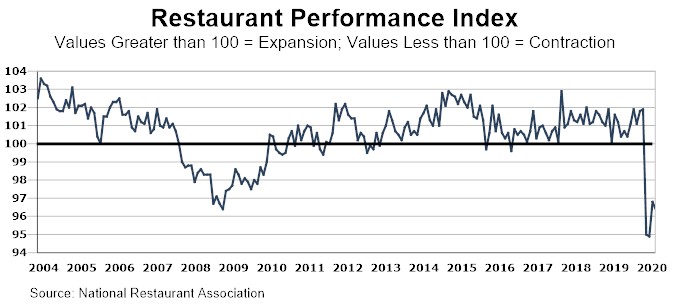

Soundproofing a restaurant for noise control
Reducing restaurant noise is critical for restaurants to compete. Restaurants are in a contraction phase due to CORVID. While some are rebounding, most will need to do everything possible to get customers to return. The National Restaurant Association just published their restaurant performance index, illustrating the contraction in restaurants under the current conditions.


A great restaurant provides an escape where guests can relax and savor their favorite meals while socializing with loved ones. Customers repeatedly patronize restaurants that offer consistently excellent service, quality cuisine, and a pleasant atmosphere.
The presence of numerous dining establishments makes the restaurant industry extremely competitive. So restaurants must provide a consistently satisfying dining experience to develop and retain a loyal customer base.
Not only do restaurant patrons demand excellent tasting food and friendly service, but they also seek enjoyable ambiance and the ability to intimately converse with other members of their party.
Controlling noise levels in a restaurant is enough to drive business elsewhere. So it is imperative for restaurant owners to minimize unwanted sound throughout their dining areas.
Many easily implemented sound reduction options are available to restaurant owners who want to improve the ambiance by reducing restaurant noise. Good food in quiet surroundings will contribute to restaurant success.
Excessive noise in restaurants stems from a vicious cycle wherein a jumble of conversations generate reverberations. And this causes guests to speak louder to be heard over the noise.
Restaurants typically require a lot of hard surfaces such as tables, floors, and countertops to facilitate cleaning. As a result, is an abundance of highly reflective surfaces that intensify sound reverberates throughout the establishment.
The goal of reducing noise in a restaurant requires reducing the background noise level by reducing the reverberation time of the sound. This provides patrons with a pleasant environment where they can hear and be heard.
Reverberations can be held to a minimum by installing soundproofing products designed for restaurant walls, ceilings, or both. However, these techniques will not bring dead silence to a room full of talking guests.
They will absorb excess sound and reduce the overall decibel level such that patrons can enjoy the atmosphere and socialize in normal conversational tones.
Installing carpet on floors can also help but most restaurants chose surfaces that are easier to clean and less prone to bacteria. Felt pads or other soundproofing material on chair legs can reduce noise.
Soundproofing panels and tiles designed to be wall-mounted for the absorption of excess reverberations are widely available. They can be custom fitted for use in specific areas. Many are available in various colors to coordinate with restaurant furnishings and align with corporate color schemes.
Wall acoustic panels are often not an option as they may interfere with the décor that restaurants integrate into their persona. Therefore, ceiling soundproofing tiles or clouds may be used instead of (or in conjunction with) wall panels for increased reverberation control.
Some ceiling tiles are designed to be placed in an existing grid-based ceiling structure. Although adequate they may not always be desired by restaurants whose design scheme would be affected.
Ceiling clouds or decorative suspended sound panels that “float” from the ceiling in even aesthetically pleasing rows offer a popular restaurant solution.
For areas with large windows, sound-absorbing blinds may be installed to capture sound and control reverberations from windows.
Background music can add to the ambiance or make the noise levels worse in the dining room. Owners need to be aware of the sound levels of the music and the type of music to minimize its contribution to NOISE.
Kitchens in restaurants are noisy. Kitchen doors and controlling traffic patterns in and out of the kitchen can help. Do the doors open directly into the dining room?
If so, additional sound buffering in between the doors and the room might help reduce the noise.
Anyone wishing to implement a restaurant sound reduction project is advised to consult a reputable soundproofing company. They will ensure that all variables are considered and that an effective solution is installed.
Sound level control is an issue that restaurant owners must address to maximize their guests’ comfort and satisfaction and build a loyal repeat customer base that will contribute to the restaurant’s long-term success.
For more information on solving your restaurant noise issues, visit us online for your free room analysis or call 1-800-638-9355!
Ensuring Safety and Sound Control in Large Spaces When it comes to controlling noise in…
The Growing Need for Noise Control in Pickleball Centers As pickleball continues to grow in…
As we approach 2025, animal shelters in New York are gearing up for significant changes…
In today's world, where open-concept living spaces and bustling office environments are increasingly common, managing…
Whether building a new home or renovating an existing room into a residential home theater,…
Acoustic panels are used to reduce background noise in large rooms by absorbing sound energy,…
This website uses cookies.